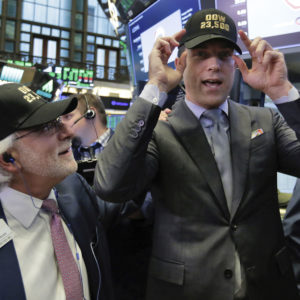Back in 1933, renowned investor Sir John Templeton famously said that the investor who says that “this time is different,” when in fact it is virtually a repeat of an earlier situation, has uttered among the four most costly words in the annals of investing.
He might very well have been speaking about economic policymakers and investors today who try to convince themselves that the bubbles in today’s global economy will have a happier ending than previous bubbles because “this time is different.”
They do so despite the fact that there are a number of good reasons to fear that if today’s global bubble situation is indeed different from 2008, it might be because it is more dangerous.
The most obvious way in which today’s global economic situation would appear to be more worrying than that in 2008 is the increased pervasiveness of bubbles today than before. In the run-up to the 2008 Lehman crisis, the bubbles were contained to the U.S. housing and credit markets; today, they appear to be found in almost every corner of the world economy.
It is not simply that we are witnessing egregious bubbles of historic proportions in exotic markets like the Bitcoin market or the Leonardo da Vinci art market. Rather, it is as the former Federal Reserve Chairman Alan Greenspan recently warned, years of highly unorthodox monetary policy by the world’s major central banks has created an unprecedented global government bond bubble, with long-term interest rates plumbing historically low levels.
Greenspan might have usefully added that the bubble has hardly been confined to the sovereign bond market. Indeed, global equity valuations are at lofty levels that have only been experienced three times in the last century. At the same time, housing-price bubbles are all too evident in key countries like Australia, Canada, China and Britain, while interest rates have been driven down to unusually low levels for the high-yield debt and emerging-market corporate debt markets.
If one had any doubt that global credit markets have lost touch with reality, all one needs to do is to consider a number of recent international bond issues. How is it that a country like Argentina, which has distinguished itself by defaulting no less than five times in the last hundred years, has managed to place a 100-year bond on good terms in the market? Or how is it that war-torn Iraq or little-known Mongolia not only can place bonds in the market but can have these bonds several times oversubscribed?
It also does not help matters that the bursting of bubbles today would be taking place in the context of a world more indebted than it was on the eve of the Lehman crisis. Particularly troublesome on this score are the very high levels of Chinese non-public sector debt, Italian sovereign debt, and emerging market corporate dollar-denominated debt.
Yet another reason to fear that if this time is different, it could be for the worse is the likely policy response to the bursting of bubbles this time around.
With the changing of the guard at both the Federal Reserve and the U.S. Treasury, we no longer have experienced hands at those institutions, who could craft and lead a swift and decisive international response to the bursting of the global bubble. Worse yet, there is reason to fear that an American First Trump administration would have an ideological aversion to orchestrate an international response in the event of a global market panic.
Those who argue that this time is different for the better seem to rest their argument on the stronger regulatory system that is now in place for the U.S. banking system. They argue that as a result of the Dodd-Frank Act, U.S. banks are very much less leveraged than they were before and very much less prone to taking on excessive risk.
While there is certainly much truth to these claims, the key point that the optimists overlook is that today the major part of U.S. credit is intermediated by the shadow banks rather than by the regulated banks. They also seem to forget the 1998 Long Term Capital Market experience that shook the global financial system to its core. That experience should have taught us that hedge funds and other parts of the shadow banking system, like the private equity funds and the money market funds, are highly interconnected and can be subject to the same sort of deposit runs as the banks themselves.
Well before Sir John Templeton issued his “this time is different” warning, Tolstoy wrote that happy families are all alike while every unhappy family is unhappy in its own way. When we look back on today’s unusually frothy global financial markets, we might find that Tolstoy’s dictum was as relevant as that of Sir John as a cautionary tale for both investors and economic policymakers.

